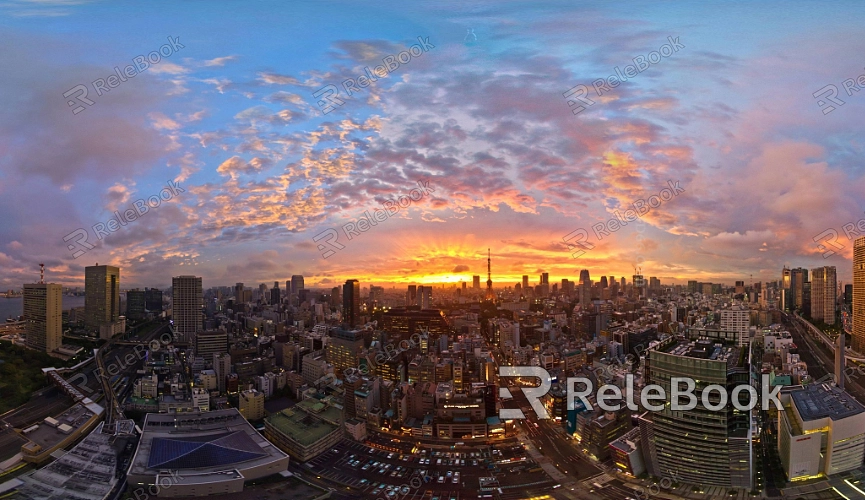Why Does HDR Look Bad
HDR (High Dynamic Range) is widely used in architectural visualization, product design, and character animation to enhance the lighting and shadow effects, making scenes appear more realistic. However, in practice, HDR doesn't always deliver the expected results. This can lead to renders that look unnatural, lack depth, or lose details. In this article, we'll explore some common reasons why HDR effects might not look as good as they should and offer some tips on how to improve them.

1. Issues with HDR Image Quality
Low Resolution HDR Images
The quality of HDR effects largely depends on the resolution of the HDR image being used. If the image resolution is too low, lighting details can't be fully captured, resulting in blurry and less realistic renders. This issue is particularly noticeable in large scenes where low-resolution HDR images cause uneven lighting, negatively affecting the overall visual impact.
Using Inappropriate HDR Images
Choosing the right HDR image is crucial for different rendering scenarios. If you use an HDR image that doesn't match the scene, such as using an outdoor HDR image for an indoor setting, the light direction and color temperature may not align properly, leading to unnatural results. If finding high-quality HDR images feels too complicated or time-consuming, you can visit Relebook and download stunning HDR resources from textures.relebook.com.
Solution
To enhance the depth and detail of lighting in your scenes, ensure that you're using high-resolution HDR images that are appropriate for the setting. Selecting the right HDR image at the right time can make your renders more realistic and align with your design intentions.
2. Improper Lighting Settings
Incorrect Light Intensity and Exposure Settings
The success of HDR rendering is directly influenced by the intensity of the lighting and exposure settings. If the light intensity is set too high, the scene can appear overexposed, causing a loss of detail. On the other hand, if it's set too low, the scene may look dark and lack depth. Similarly, incorrect exposure settings can create an imbalance in image brightness, leading to poor detail in highlights and shadows.
Misaligned Light Direction
The direction of the lighting is key to achieving realistic shadow effects. If the light direction is set incorrectly, the rendered image will lose the natural relationship between light and shadow, making the scene appear disjointed.
Solution
Adjust the light intensity and exposure settings to create a more balanced and natural light and shadow effect. Set the light direction according to the needs of the scene to ensure that the distribution of light and shadow is reasonable and reflects real-world lighting logic.

3. Material and HDR Lighting Mismatch
Material Reflection Settings Issues
The reflective properties of materials play a significant role in HDR rendering. If the reflection parameters are not set correctly, whether too strong or too weak, it can affect the realistic representation of light and shadow. This is especially true when dealing with highly reflective materials like metals and glass, where inaccurate reflection settings can make the entire scene look unnatural.
Inconsistent Color Temperature between Material and HDR Lighting
Material performance relies not only on light intensity but also on the color temperature of the light source. If the material's color temperature doesn't match the HDR light source, it can cause discrepancies in material appearance, leading to an imbalanced scene tone.
Solution
Adjust reflection parameters and light source color temperature according to the characteristics of the material to ensure that the material matches the light source. This will enhance the realism of the HDR effect.
4. Insufficient Rendering Settings and Post-Processing
Insufficient Sampling Leading to Noise
The number of samples used during rendering directly affects image quality. If the sampling is too low, noise can appear in the image, reducing overall clarity and detail.
Neglecting the Importance of Post-Processing
Even if the pre-rendering settings are done correctly, neglecting post-processing can prevent HDR effects from being fully realized. In post-processing, contrast, color balance, and detail enhancement are key aspects to focus on. Over or under-adjusting these can impact the final result.
Solution
Increase the number of samples to reduce noise, ensuring that the rendered result is clear and detailed. In post-processing, carefully adjust various image parameters to fully bring out the HDR effect in the final product.
By understanding and addressing these common issues, designers can significantly improve the quality of HDR rendering, making scenes more realistic and visually engaging. While HDR can be complex, proper settings and optimization can greatly enhance the value it brings to your projects.
If you're in need of high-quality HDR images, 3D textures, SketchUp models, or 3ds Max models to enhance your modeling and virtual scenes, Relebook is an excellent resource. Relebook offers a wide range of HDR image resources and professional 3D materials, helping you achieve the best results in your projects and create stunning visual effects.

